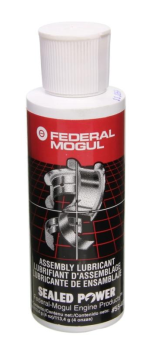So some thoughts or questions to ponder.
What is used by those who build 500-4000 engines per day?
What is the "break-in" period needed for 300,000 mile mean time to failure?
How long to "ring seat and seal"?
Why do the engine plants no longer even start and test all the things coming off the line?
If you buy a new car the engine gets fired up for the very first time as the fully assembled vehicle rolls out.
At this point it must, must, must meet all emission requirements and work correctly.
Yes there is often a cold test to make sure it at least rotates, pumps air and makes no funny noises.
In the past there was most certainly a break in needed to allow all the parts to become "friends".
That is gone now... why?
IMO if built correctly the break in period is 1 to 2 minutes or less.
I my past I put the wrong cam in 427 Chevy. Seems there was a grooved and non-grooved at the ass end and I did not know this.
Not sure why now but I pulled a valve cover after a while. No oil to the rockers up top. None...

The only way it survived was my assembly mix of grease and STP.
My carbide insert grinders had a HSS cam and a carbide plate follower.
One would think the cams go bad first. No... since there are 200+ different cams for all sizes and shapes. The carbide pad would wear and puck up the B dimension.
Fought this. It is machine downtime to regrind this pad and when to do it.
What the heck this worked in my car motor so lets try it here. Ten times the life over way oil.
Bob




